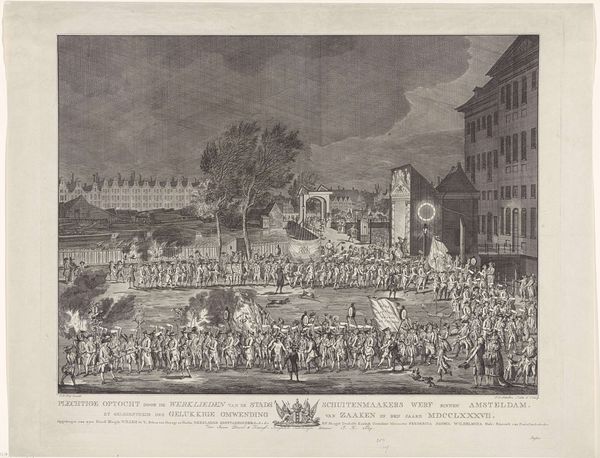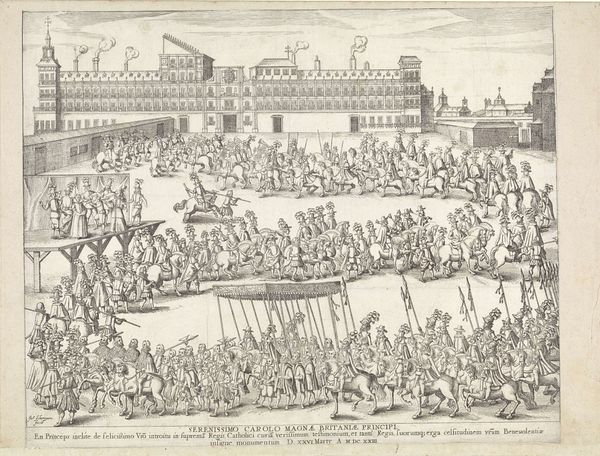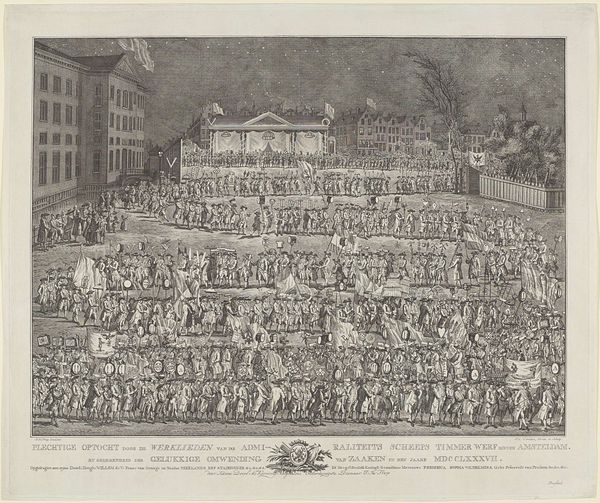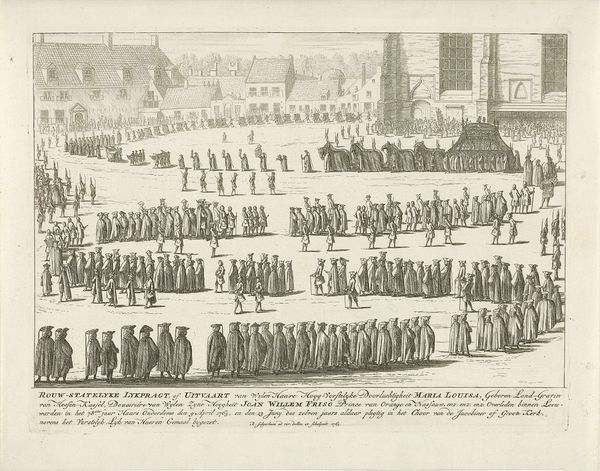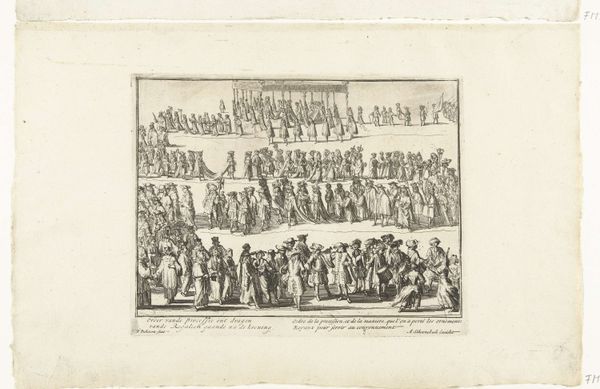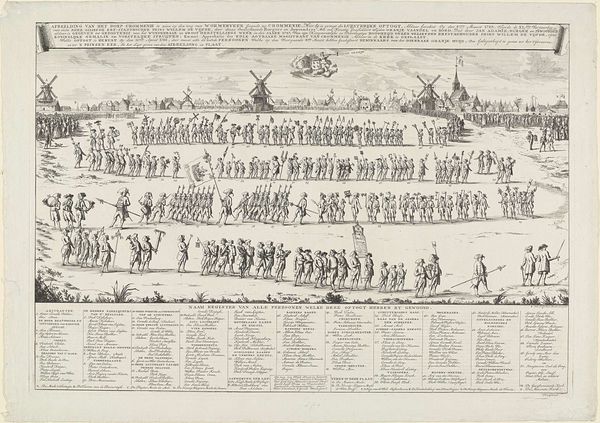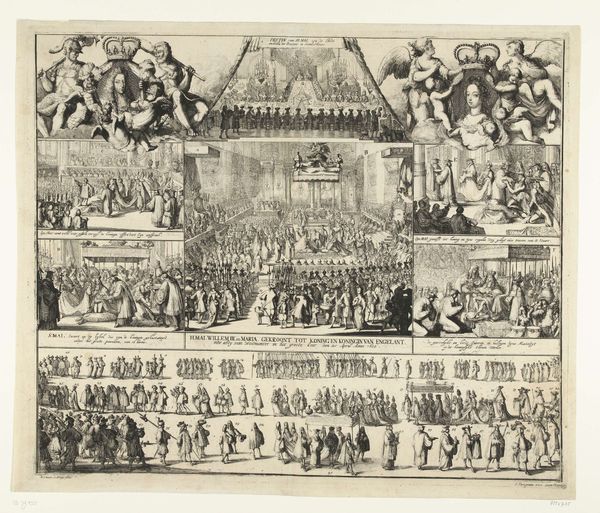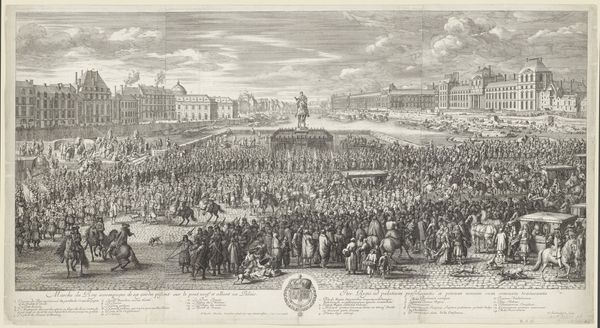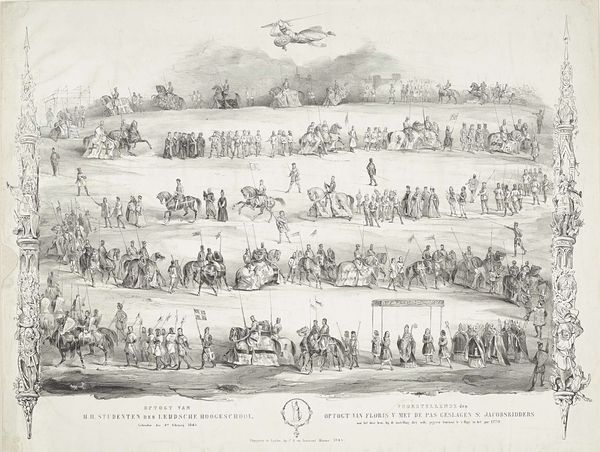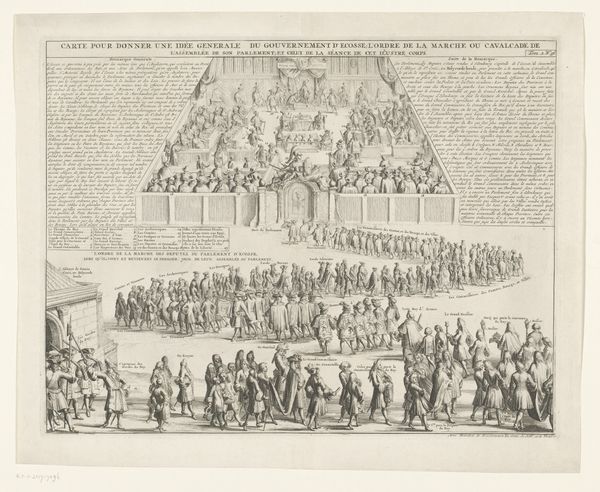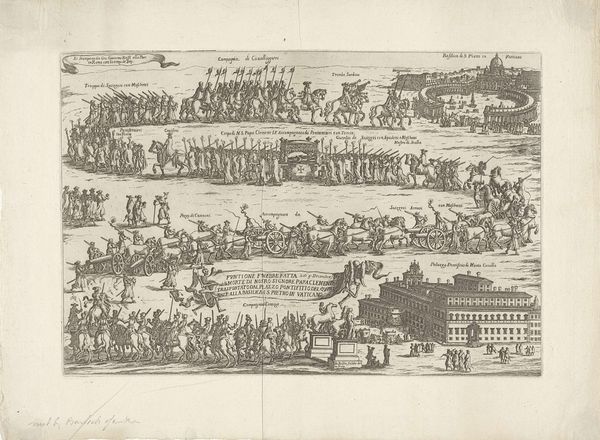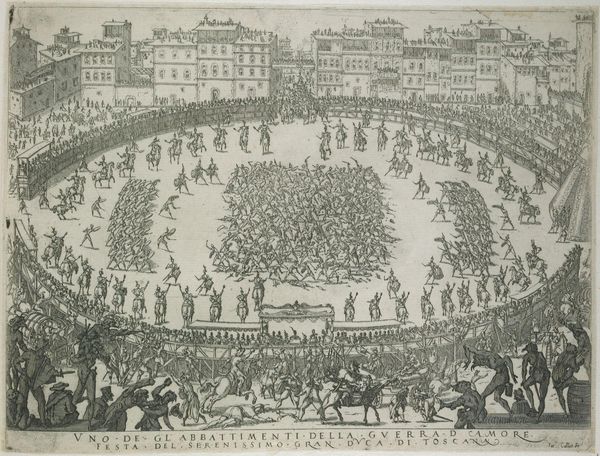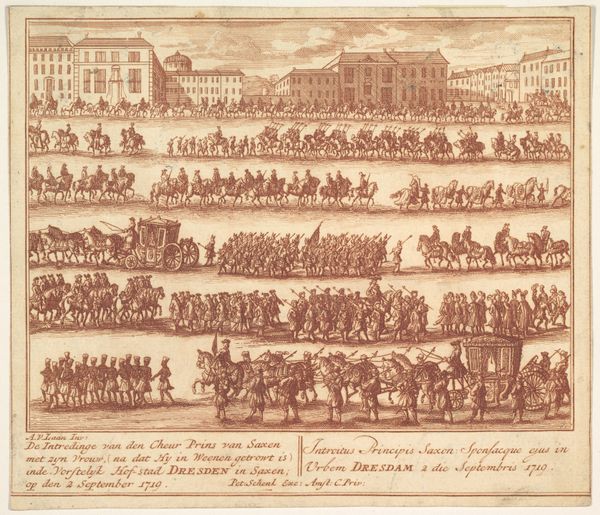
Plechtige Optocht door de Werklieden van de Oost-Indische Compagnies Werf binnen Amsteldam. By gelegentheid der Gelukkige Omwending van Zaaken in den Jaare MDCCLXXXVII 1787
0:00
0:00
Dimensions: height 570 mm, width 680 mm
Copyright: Rijks Museum: Open Domain
Curator: This engraving from 1787 by Johan Christoffel Schultz depicts a procession, and is titled "Plechtige Optocht door de Werklieden van de Oost-Indische Compagnies Werf binnen Amsteldam" which translates to "Solemn Procession by the Workers of the East India Company’s Wharf in Amsterdam." The level of detail is fascinating. What are your initial thoughts? Editor: It’s quite a scene! I notice the large crowd, all those tiny figures marching together, almost like a wave. And then, there’s that grand building in the background. It’s a very formal and organized procession it seems, but what's the story here? What do you see in this work? Curator: Given the historical context, it's important to consider this "Gelukkige Omwending," or "Happy Reversal." This likely refers to the restoration of power to the Stadtholder, William V, after a period of Patriot revolt. This image, therefore, isn’t just a neutral depiction of workers; it's a visual assertion of restored authority and perhaps a suppression of dissenting voices. What do you notice about who is included, and maybe more importantly, who is excluded from this representation? Editor: I hadn't considered that angle! It makes sense that it might be presenting a particular point of view. The focus on the workers of the East India Company is interesting. Were they particularly supportive of the Stadtholder? Curator: Precisely. The East India Company represented significant economic and political power. Showing their support for William V visually ties his authority to that wealth and influence. The image becomes a form of propaganda, legitimizing his rule and marginalizing those who opposed him. It almost makes you wonder about the individual identities within that crowd of workers; were their voices truly represented, or were they simply symbolic pawns? Editor: That's a powerful point. So, looking at it as a piece of propaganda really shifts my perspective. It's no longer just a historical record but a deliberate construction of power. Curator: Exactly. By considering the historical and social context, we can uncover the layers of meaning embedded in what might initially appear as a simple cityscape. It invites us to critically examine whose stories are being told and whose are being silenced. Editor: That’s such an important takeaway. Thanks for shedding light on those critical nuances! Curator: Of course! I'm so glad to see you are on your way to connecting historical analysis to contemporary ways of thinking about political narratives.
Comments
No comments
Be the first to comment and join the conversation on the ultimate creative platform.
